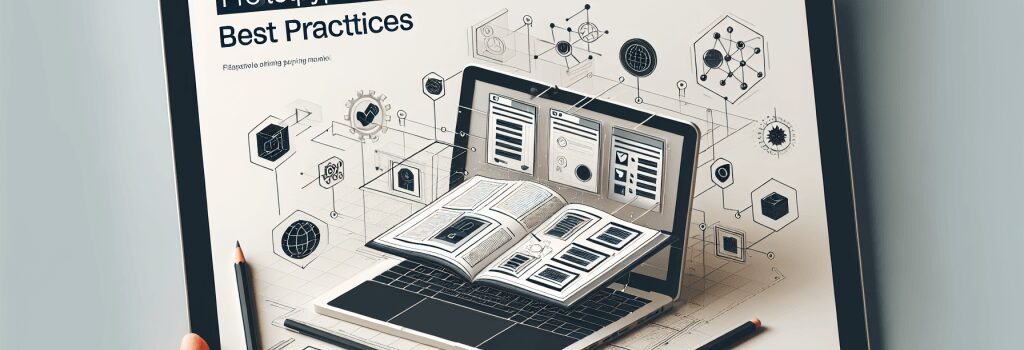Prototyping for E-Learning Platforms: Best Practices

Introduction to Prototyping for E-Learning Platforms
In the ever-evolving world of web development, creating an e-learning platform requires meticulous planning and a scalable approach. Prototyping, an indispensable phase, allows developers and designers to visualize and test concepts before investing heavily in building the actual product. This article provides a detailed guide on prototyping for e-learning platforms, emphasizing best practices to ensure your project’s success.
Understanding Prototyping in Web Development
Prototyping is a process of developing a preliminary model or a demo version of a website or application. It is a collaborative effort that involves feedback from designers, developers, and stakeholders to refine the user experience (UX) and user interface (UI) design. For e-learning platforms, an engaging and intuitive design is paramount to facilitate learning and retention.
Best Practices for Prototyping E-learning Platforms
Start with Clear Objectives
– Define Your Goals: Before diving into prototyping, have a clear understanding of what you aim to achieve with your e-learning platform. Whether it’s enhancing specific skills, teaching a new language, or providing certification courses, your goals should inform the design and functionality of the prototype.
– Identify Your Audience: Tailor your platform to your target audience. Understand their preferences, technical proficiency, and learning habits. This insight will guide your design decisions and ensure the platform meets the learners’ needs.
Wireframing: Laying the Blueprint
– Sketch It Out: Begin with basic sketches to layout the fundamental structure of your e-learning platform. Wireframes are crucial for visualizing the user journey and identifying key features without getting bogged down in design details.
– Prioritize Navigation: Ensure your wireframes illustrate a clear and intuitive navigation structure. Learners should be able to find courses, track their progress, and access resources effortlessly.
Incorporate Interactive Elements Early
– Dynamic Content: Integrate interactive elements such as quizzes, drag-and-drop activities, and short games in your prototype. These elements make learning engaging and can significantly enhance retention.
– Feedback Loops: Design immediate feedback mechanisms into your prototype. Whether it’s quiz results, progress trackers, or personalized suggestions, feedback is critical for a rewarding learning experience.
Prototyping Tools and Feedback
– Selecting the Right Tools: Choose prototyping tools that align with your project’s complexity and your team’s expertise. Tools like Adobe XD, Sketch, and Figma offer a range of functionalities suitable for designing dynamic e-learning platforms.
– Iterative Testing: Prototyping is an iterative process. Conduct usability tests at various stages of development to gather feedback from potential users. This feedback is invaluable for refining the prototype and enhancing its usability and effectiveness.
Finalizing the Design
– High-Fidelity Prototypes: Transition from low-fidelity wireframes to high-fidelity prototypes that closely resemble the final product. High-fidelity prototypes should include actual visuals, accurate content, and interactive elements.
– Consistency is Key: Ensure your design is consistent across all pages and elements. Consistency in fonts, colors, and layout structures contributes to a cohesive learning environment.
Conclusion
Prototyping for e-learning platforms is a critical step in the web development process. It allows teams to visualize concepts, test functionalities, and refine user experiences. By following these best practices, developers and designers can create engaging, interactive, and effective e-learning platforms. Remember, a successful prototype is one that’s iterative, user-centered, and aligned with your educational goals.


